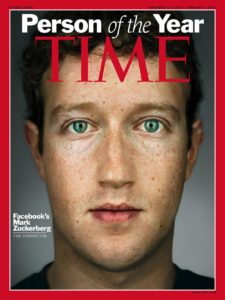In 2010, we were dusting off the ashes of the most severe recession since the Great Depression. We were still clinging to our Blackberry Bolds, thanks to their seemingly indispensable keyboards, yet excited about the impending launch of the first iPad. We were busily upgrading our PCs to Windows 7, as instructed by Steve Ballmer’s Microsoft.
As with the economy, our clients’ businesses were beginning to heat up. We learned that our founding client GCI won an $88 million funding package as a result of a loan and grant application we helped write for an ambitious engineering project we branded as TERRA (Terrestrial for Every Rural Region of Alaska). TERRA went on to bring high-speed terrestrial internet to 84 of the most remote communities in the United States.
In early 2010, we scored repeated national media appearances for our client Onvia, which was having a press heyday reporting on how billions of dollars in Recovery Act stimulus grants like the Alaska one were being awarded. Cyberwarfare and cybersecurity marched into the public mind as the Stuxnet exploit was revealed. Somehow Mark Zuckerberg was named Time’s “Person of the Year.” And Obamacare was newly passed, heralding market-making opportunities for our healthcare IT clients to build the provider and payer framework for the new decade.

Time Magazine Cover, January 2011
Over the course of the intervening 10 years, we have added a substantial cybersecurity and privacy practice and greatly expanded our healthcare practice – both of which turned out to be winning strategies that helped power our growth of 3.5x this past decade.
During that decade, we and our clients were parties to some epic news events – the launch of TSA PreCheck, the hunt for the Boston Marathon bomber, the botched launch of Healthcare.gov and the eventual rise of health insurance exchanges, the rapid adoption of telehealth, 2016 election security, tech unicorns, GDPR, the Bitcoin bubble, and the rise of Techlash.
We still believe we are at the early stages of a decades-long cycle of transformation and disruption that will dramatically improve the way we live, learn, transact, communicate and collaborate.
Meanwhile, the cities we called home experienced booms unrivaled in recent history. Amazon led the way in Seattle, remaking vast swaths of its downtown. Federal government contracting stoked private sector expansion in DC – particularly in tech. Ultimately, the two growth stories merged when Amazon selected Northern Virginia for HQ2 in 2018.
2019 marked the end of a decade of big investments that broadened our role as the strategic advisors and skilled communicators for the innovators of the future. We went all-in on social media services, stood up a podcasting team, built up our graphic and web design capabilities, and fashioned an intense internship program to train the next generation of communications pros, whether for RH Strategic or for the world at large.
We also joined the Worldcom Public Relations Group, the top global network of independent agencies like ourselves. The decade culminated with the move of our D.C. office to The Washington Post building, giving us room to grow and to host events. See the post on that development here.
So what’s next for RH Strategic and its clients? Computer scientist Alan Kay once said, “The best way to predict the future is to invent it.” This statement mirrors the ethos of our clients. It also mirrors our own. We still believe we are at the early stages of a decades-long cycle of transformation and disruption that will dramatically improve the way we live, learn, transact, communicate and collaborate.
We’re constantly reminded how lucky we are to be on this journey with our clients, partners and RH colleagues. We look forward to inventing the future with you.
***
RH Strategic is a Seattle and D.C.-based communications firm with a nationwide presence and additional global reach via membership in the Worldcom Public Relations Group. We provide strategic public relations for innovators in the technology, government and healthcare markets.

